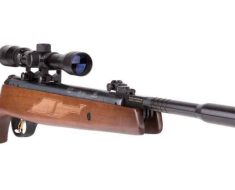“Unlocking the power of precision and security with revolver lock-up adjustments.”
Importance of Revolver Lock-Up in Firearm Safety
Revolver lock-up is a critical component of firearm safety and precision. Understanding how it works and how to adjust it can make a significant difference in the performance of your revolver. In this article, we will explore the importance of revolver lock-up and provide some tips on how to adjust it for optimal security and accuracy.
The lock-up of a revolver refers to the mechanism that holds the cylinder in place when the gun is fired. A secure lock-up is essential for preventing the cylinder from rotating prematurely, which can cause misfires or other malfunctions. It also ensures that the barrel is properly aligned with the chamber, which is crucial for accuracy.
There are several different types of revolver lock-up mechanisms, including the traditional leaf spring, the ball detent, and the sliding latch. Each type has its own advantages and disadvantages, but they all serve the same basic purpose of securing the cylinder in place during firing.
One of the most common issues with revolver lock-up is excessive play, which can cause the cylinder to wobble or rotate slightly when the gun is fired. This can lead to decreased accuracy and reliability, as well as increased wear on the gun’s components. Fortunately, there are several ways to adjust the lock-up of a revolver to minimize play and improve performance.
One simple way to adjust revolver lock-up is to tighten the screws that hold the frame together. Over time, these screws can become loose, allowing the frame to flex slightly when the gun is fired. By tightening the screws, you can reduce this flex and improve the stability of the lock-up mechanism.
Another common adjustment is to replace the leaf spring or ball detent with a stronger or stiffer spring. This can help to reduce play in the lock-up mechanism and provide a more secure hold on the cylinder. However, it is important to be careful when making this adjustment, as too much tension on the spring can cause the cylinder to bind or prevent it from rotating freely.
In some cases, it may be necessary to replace the entire lock-up mechanism to achieve the desired level of security and precision. This can be a more involved process, but it can be worth it in the long run if it improves the performance of your revolver.
Overall, understanding and adjusting revolver lock-up is essential for ensuring the safety and accuracy of your firearm. By taking the time to make these adjustments, you can improve the performance of your revolver and enjoy a more reliable shooting experience. Whether you are a seasoned shooter or a novice, it is important to pay attention to the lock-up of your revolver and make any necessary adjustments to ensure that it is functioning properly.
Common Issues with Revolver Lock-Up Mechanisms
Revolver lock-up mechanisms are crucial components of these firearms, as they ensure both security and precision when firing. However, like any mechanical system, they can experience issues that may affect their performance. Understanding these common problems and how to adjust them can help maintain the reliability and accuracy of your revolver.
One of the most common issues with revolver lock-up mechanisms is cylinder play. This occurs when there is excessive movement between the cylinder and the frame, which can lead to misalignment and decreased accuracy. To address this issue, you can adjust the cylinder stop screw to tighten the fit between the cylinder and the frame. This will help reduce play and improve the lock-up of the revolver.
Another common problem is timing issues, where the cylinder does not properly align with the barrel when the gun is cocked. This can result in misfires or even dangerous malfunctions. To adjust the timing of your revolver, you may need to adjust the hand or the hand spring. This will ensure that the cylinder rotates smoothly and aligns correctly with the barrel, improving the overall performance of the firearm.
Additionally, some revolvers may experience lock-up issues due to worn or damaged parts. If you notice that your revolver is not locking up properly, it may be time to inspect and replace any worn components. This can include the hand, hand spring, cylinder stop screw, or other internal parts that may be causing the problem. By replacing these parts, you can restore the lock-up mechanism to its original functionality and ensure the security and precision of your revolver.
It is important to note that adjusting revolver lock-up mechanisms should be done carefully and with the proper tools. If you are unsure about how to make these adjustments, it is best to consult a professional gunsmith who can help diagnose and fix any issues with your revolver. Attempting to adjust the lock-up mechanism without the necessary knowledge or experience can lead to further damage and potentially dangerous situations.
In conclusion, understanding and adjusting revolver lock-up mechanisms is essential for maintaining the security and precision of these firearms. By addressing common issues such as cylinder play, timing problems, and worn parts, you can ensure that your revolver functions properly and reliably. If you encounter any issues with your revolver’s lock-up mechanism, it is best to seek professional help to avoid causing further damage. With proper maintenance and care, your revolver can continue to perform at its best for years to come.
How to Properly Maintain and Adjust Revolver Lock-Up
Revolver lock-up is a critical component of a revolver’s mechanism that ensures the cylinder is properly aligned with the barrel for accurate shooting. Understanding how revolver lock-up works and how to adjust it is essential for maintaining the security and precision of your firearm.
When a revolver is fired, the force of the explosion pushes the bullet down the barrel and causes the cylinder to rotate. The lock-up mechanism is what holds the cylinder in place while the bullet is fired, preventing it from rotating too far or too little. This ensures that the bullet is properly aligned with the barrel, resulting in accurate shooting.
There are several types of revolver lock-up mechanisms, including the hand and bolt system, the crane and yoke system, and the cylinder latch system. Each of these systems has its own unique characteristics and requires different adjustments to ensure proper lock-up.
To properly maintain and adjust revolver lock-up, it is important to first understand how the lock-up mechanism works. The hand and bolt system, for example, uses a hand that pushes against the ratchet on the cylinder to lock it in place. The crane and yoke system, on the other hand, uses a yoke that locks into the frame of the revolver to hold the cylinder in place.
To adjust the lock-up mechanism on a revolver, you will need to disassemble the firearm and carefully inspect each component. Look for any signs of wear or damage, such as worn or broken parts, that may be affecting the lock-up mechanism. If you notice any issues, you may need to replace or repair the affected parts to ensure proper lock-up.
Once you have inspected the revolver and identified any issues with the lock-up mechanism, you can begin adjusting it to improve security and precision. This may involve adjusting the tension on the hand or bolt, adjusting the fit of the yoke in the frame, or adjusting the cylinder latch to ensure it engages properly.
When adjusting the lock-up mechanism on a revolver, it is important to make small, incremental changes and test the firearm after each adjustment. This will help you determine the optimal settings for the lock-up mechanism and ensure that the revolver is functioning properly.
In addition to adjusting the lock-up mechanism, it is also important to regularly clean and lubricate the revolver to prevent wear and ensure smooth operation. Use a high-quality gun oil to lubricate the moving parts of the revolver and remove any dirt or debris that may be affecting the lock-up mechanism.
By understanding how revolver lock-up works and how to adjust it, you can maintain the security and precision of your firearm and ensure that it functions properly. Regular maintenance and adjustments will help extend the life of your revolver and improve its performance on the range or in the field. So take the time to properly maintain and adjust your revolver lock-up for security and precision.
Enhancing Precision Shooting with a Secure Revolver Lock-Up
Revolver lock-up is a critical component of a firearm that ensures both security and precision in shooting. Understanding how the lock-up mechanism works and how to adjust it can greatly enhance your shooting experience. In this article, we will delve into the intricacies of revolver lock-up and provide tips on how to adjust it for optimal performance.
The lock-up mechanism in a revolver is designed to ensure that the cylinder is properly aligned with the barrel when the gun is fired. This alignment is crucial for accuracy and consistency in shooting. A secure lock-up also prevents the cylinder from rotating prematurely, which can cause misfires or other malfunctions.
There are several types of lock-up mechanisms used in revolvers, including the traditional leaf spring, ball detent, and sliding latch designs. Each type has its own unique characteristics and requires different adjustment techniques. It is important to familiarize yourself with the specific lock-up mechanism in your revolver before attempting any adjustments.
One common issue that shooters encounter with revolver lock-up is cylinder play, which refers to the amount of movement the cylinder has when locked in place. Excessive cylinder play can negatively impact accuracy and consistency in shooting. To address this issue, you can adjust the tension on the lock-up mechanism to reduce play and improve stability.
To adjust the lock-up tension, you will need to disassemble the revolver and locate the lock-up mechanism. Depending on the design of your revolver, you may need to adjust the tension screw, replace the leaf spring, or make other modifications to achieve the desired level of tension. It is important to make small adjustments and test the revolver after each change to ensure that you do not over-tighten the lock-up mechanism.
In addition to adjusting the tension on the lock-up mechanism, you can also improve the security and precision of your revolver by ensuring that all components are properly lubricated and maintained. Regular cleaning and maintenance will help prevent wear and tear on the lock-up mechanism and other critical parts of the revolver.
Another factor to consider when adjusting revolver lock-up is the type of ammunition you are using. Different types of ammunition can produce varying levels of pressure and recoil, which can affect the performance of the lock-up mechanism. It is important to test your revolver with different types of ammunition to determine which loads work best with your specific lock-up configuration.
In conclusion, understanding and adjusting revolver lock-up is essential for enhancing security and precision in shooting. By familiarizing yourself with the lock-up mechanism in your revolver and making small adjustments as needed, you can improve the stability and consistency of your shots. Remember to regularly clean and maintain your revolver to ensure optimal performance, and test different types of ammunition to find the best load for your specific lock-up configuration. With these tips in mind, you can take your shooting skills to the next level and enjoy greater accuracy and confidence on the range.
Upgrading Revolver Lock-Up for Improved Security and Performance
Revolver lock-up is a critical component of any revolver, as it ensures the cylinder is properly aligned with the barrel for accurate shooting. Understanding how revolver lock-up works and how to adjust it can greatly improve the security and precision of your firearm.
In a revolver, the lock-up refers to the mechanism that holds the cylinder in place when the gun is fired. This is important because if the cylinder is not properly aligned with the barrel, the bullet may not travel straight down the barrel, leading to inaccurate shooting. Additionally, a loose lock-up can also pose a safety hazard, as the cylinder could potentially rotate out of alignment during firing.
There are several factors that can affect revolver lock-up, including wear and tear on the gun, improper maintenance, and manufacturing defects. If you notice that your revolver is not locking up properly, it is important to address the issue as soon as possible to prevent any further damage to the firearm.
One way to adjust revolver lock-up is to check the timing of the gun. Timing refers to the relationship between the cylinder and the barrel when the gun is fired. If the timing is off, the cylinder may not be properly aligned with the barrel, leading to inaccurate shooting. To check the timing of your revolver, you can use a timing gauge or have a gunsmith inspect the gun for you.
Another way to adjust revolver lock-up is to check the cylinder latch. The cylinder latch is the mechanism that holds the cylinder in place when the gun is fired. If the cylinder latch is loose or worn out, it may not properly lock the cylinder in place, leading to a loose lock-up. To adjust the cylinder latch, you can tighten any loose screws or replace any worn-out parts.
Additionally, you can also adjust the cylinder stop on your revolver to improve lock-up. The cylinder stop is the part of the gun that stops the cylinder from rotating when the gun is fired. If the cylinder stop is not properly adjusted, the cylinder may not be properly aligned with the barrel, leading to inaccurate shooting. To adjust the cylinder stop, you can adjust the tension on the spring or replace any worn-out parts.
Overall, understanding and adjusting revolver lock-up is essential for improving the security and precision of your firearm. By checking the timing, cylinder latch, and cylinder stop on your revolver, you can ensure that your gun is properly aligned and secure when fired. If you are unsure how to adjust revolver lock-up yourself, it is always best to consult a professional gunsmith for assistance. By taking the time to properly maintain and adjust your revolver lock-up, you can enjoy accurate shooting and improved safety with your firearm.






